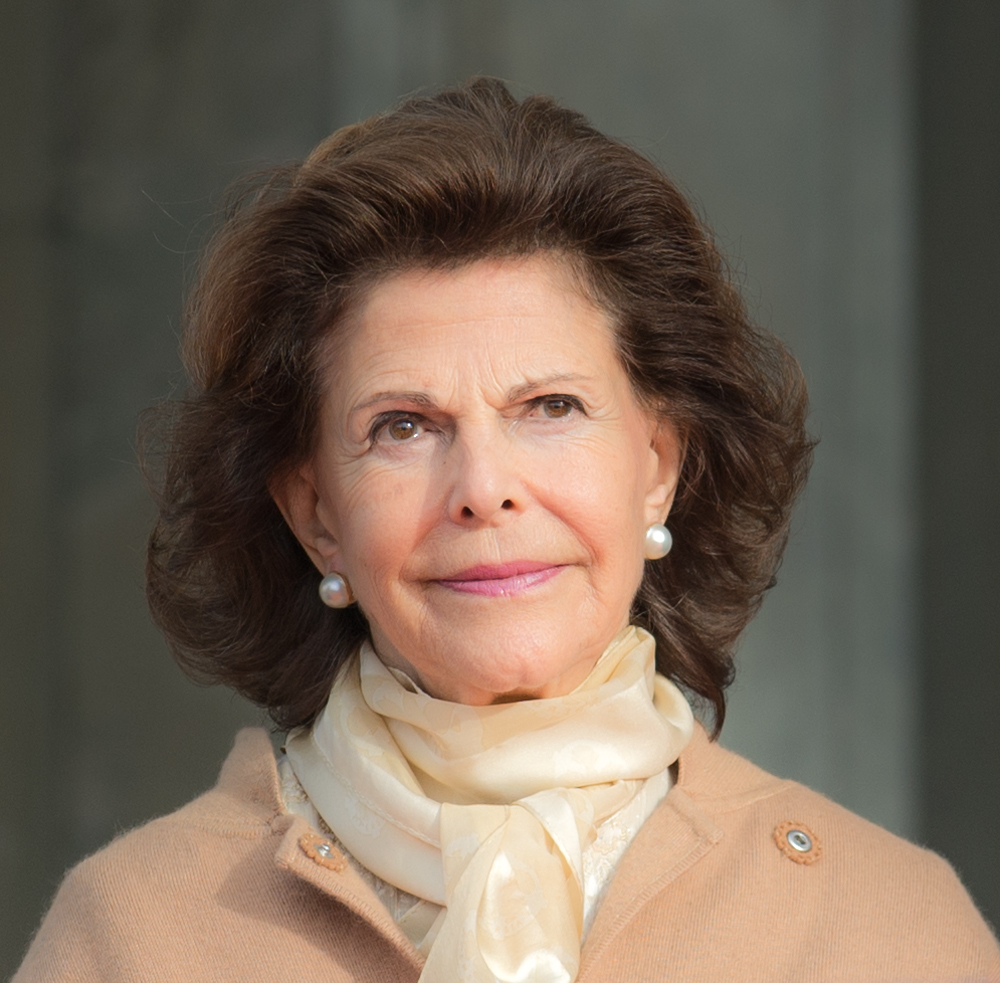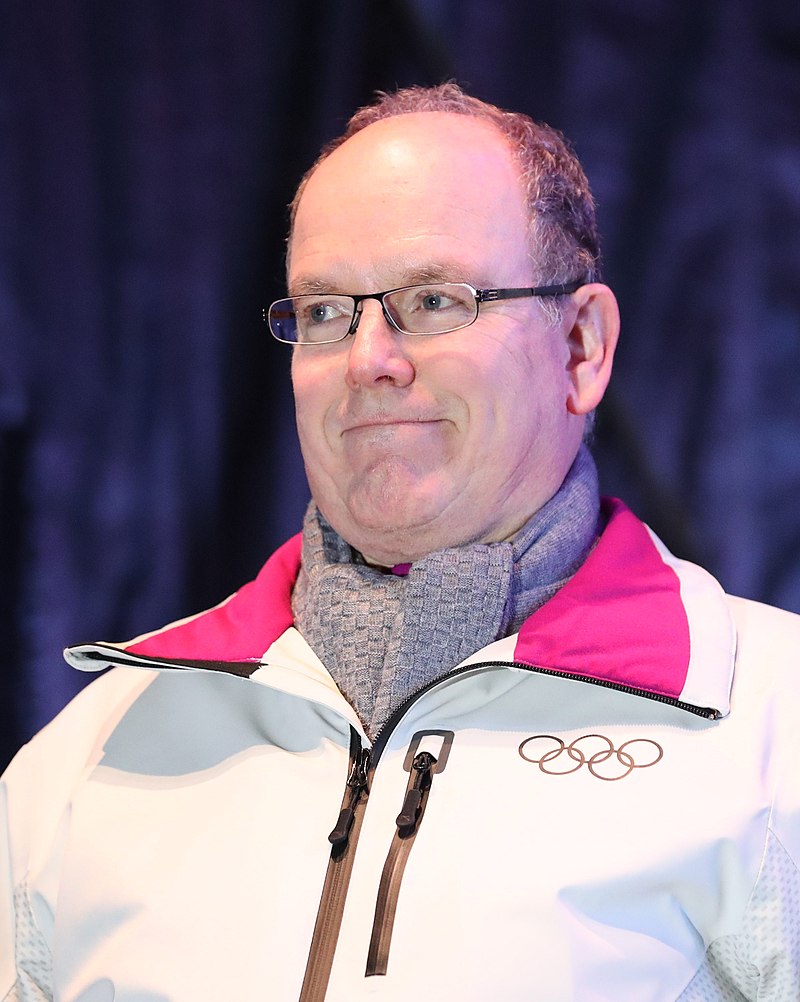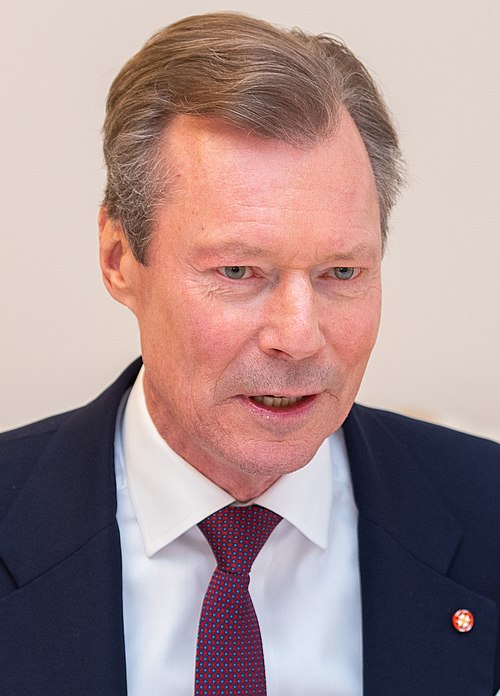by Susan Flantzer © Unofficial Royalty 2014

Queen Silvia of Sweden; Credit – Wikipedia
Silvia Renate Sommerlath was born on December 23, 1943, in Heidelberg, Germany. She is the only daughter and the youngest of four children of Walther Sommerlath (1901-1990) and his Brazilian wife Alice Soares de Toledo (1906-1997). Silvia had three older brothers: Ralf (born 1929), Walther (1934-2020), and Jörg (1941–2006).
When Silvia was almost four years old, the Sommerlath family moved from Germany to São Paulo, Brazil where they lived from 1947-1957. Silvia attended Colégio Visconde de Porto Seguro, a private, bilingual (German/Portuguese) founded in 1878 by German immigrants so their children could learn about German culture without losing their connection with Brazil. The family returned to Germany in 1957 and Silvia graduated from high school in Düsseldorf, Germany in 1963. Between 1965 and 1969 she studied at the Munich School of Interpreting, majoring in Spanish. Silvia worked briefly as a flight attendant and then worked at the Argentinean Consulate in Munich, Germany. Silvia is fluent in six languages: English, French, German, Spanish, Swedish, and Portuguese.
Silvia put her language skills to good use when she worked as a hostess trainer between 1971 and 1973 for the Organizing Committee of the 1972 Summer Olympic Games in Munich, Germany. She became Deputy Head of Protocol of the Organizing Committee for the 1976 Winter Olympics in Innsbruck, Austria.
At the 1972 Summer Olympics in Munich, Germany, Silvia met Carl Gustaf, then Crown Prince of Sweden. Carl Gustaf has said that the couple immediately “clicked” upon meeting. While the couple was courting, Carl Gustaf’s grandfather, King Gustaf VI Adolf, died on September 15, 1973, and Carl Gustaf became King at the age of 27.
The engagement of King Carl XVI Gustaf and Silvia Sommerlath was announced on March 12, 1976. The couple was married at Stockholm’s Storkyrkan Cathedral on June 19, 1976. The night before the wedding the Swedish group ABBA performed the first live Swedish television performance of their song Dancing Queen at a gala in honor of Carl Gustaf and his queen-to-be.
King Carl Gustaf and Queen Silvia have three children:
-
- Crown Princess Victoria, Duchess of Västergötland; born July 14, 1977; married Daniel Westling, had one daughter and one son
- Prince Carl Philip, Duke of Värmland; born May 13, 1979; married Sofia Hellqvist, had three sons and one daughter
- Princess Madeleine, Duchess of Hälsingland and Gästrikland; born June 10, 1982; married Christopher O’Neill, had two daughters and one son
The King and Queen and their family moved to Drottningholm Palace, a short distance from Stockholm, in 1982. The official offices remain at the Royal Palace of Stockholm.
Queen Silvia is involved in numerous charity organizations, especially in the area of disadvantaged children, the handicapped, drug abuse, dementia and elder care, and dyslexia which King Carl Gustaf has. In 1999, Queen Silvia founded the World Childhood Foundation (WCF) which works towards better living conditions for children all over the world. The WCF has offices in Sweden, Brazil, Germany, and the United States, where Princess Madeleine, the Queen’s youngest child, once worked in the New York City office.
Queen Silvia also is involved with:
- Mentor Foundation, a leading international organization for drug use and substance abuse prevention.
- The Queen Silvia Fund, an endowment that enables young handicapped people, all over the world, to benefit through Scouting.
- The Silvia Home, an organization that strives for the development of good health and care of people with dementia and their families.
In 2011, Queen Silvia became the longest-serving queen consort of Sweden, a record previously held by Sophia of Nassau, the wife of King Oscar II. She enjoys participating in outdoor activities with her husband including gardening, hiking, skiing, water skiing, and horseback riding.

The King and Queen hiking in the Swedish mountains; Photo: Swedish Royal Court
This article is the intellectual property of Unofficial Royalty and is NOT TO BE COPIED, EDITED, OR POSTED IN ANY FORM ON ANOTHER WEBSITE under any circumstances. It is permissible to use a link that directs to Unofficial Royalty.
Kingdom of Sweden Resources at Unofficial Royalty

























































































